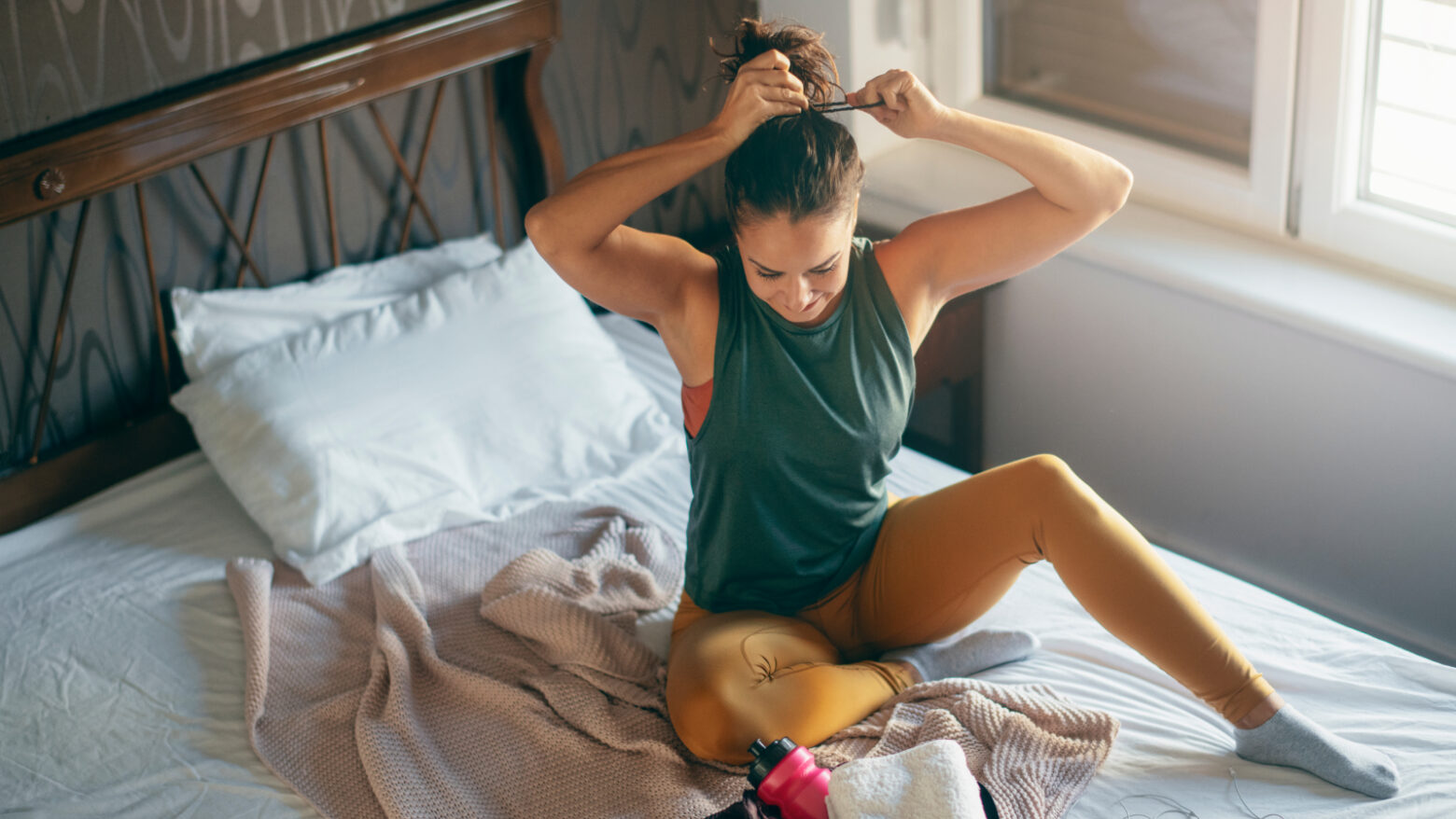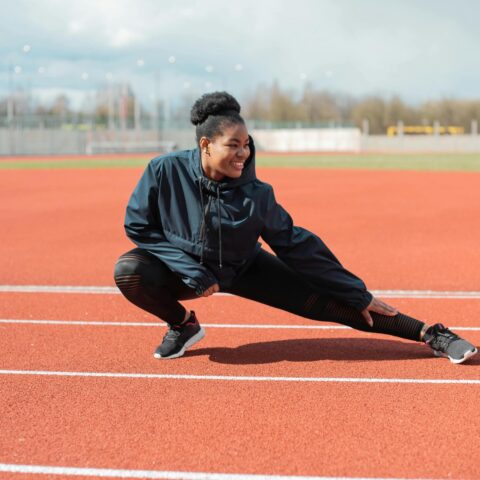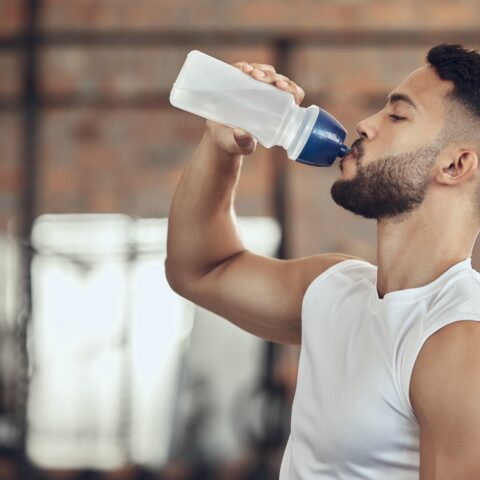Going to Bed Hungry: Sleep Low Sports Nutrition for Athletes

For athletes, especially endurance athletes, the nutrition dogma has always been to consume significant amounts of carbohydrates post-exercise in order to maximize recovery and promote the best training adaptations.
It’s well accepted in the research that muscle glycogen—the carbohydrate stores of your muscles—is replenished much more readily in the first few hours after training. Higher carbohydrate (and protein) meals help to rebuild glycogen and to offset the training-induced increase in cortisol stress hormones.1, 2
But what would happen if you didn’t eat after exercise? Would it completely derail your recovery and future performance? Many believe so. But surprising new research is starting to show that bucking the sports nutrition dogma and strategically avoiding replenishing your glycogen from time to time may actually improve your performance.
What Is the Sleep Low Strategy?
The sleep low strategy, a new concept in endurance sports, involves training intensely in the evening (after a typical meal) and then actively avoiding carbohydrates in the post-workout meal before settling down to sleep (though some protein and fats are allowed).3
The sleep low nickname refers to athletes maintaining low glycogen stores by “going to bed hungry” and engaging in another low-intensity exercise session in the morning before breakfast.
The notion of not adequately replenishing glycogen post-training is thought to be an absolute performance and recovery killer, but a recent study of triathletes in France highlighted the potential benefits of this sleep low strategy.
Twenty-one triathletes were divided into a sleep low group and a control group. They consumed the exact same total daily carbohydrates over the three weeks, but at different times throughout the day. The control group consumed their carbohydrates across the day (i.e., breakfast, lunch, and dinner) while the sleep low group consumed all of their carbs at breakfast and lunch, but nothing after their evening training or before their morning session.
The researchers found after three weeks of doing the exact same training protocol, the sleep low group improved significantly more than the control group in their submaximal cycling economy, supra-maximal cycling time to exhaustion, and 10km running time—not to mention a significant decrease in fat mass.3
However, several other studies found no improvements in performance with a sleep low strategy, demonstrating that this is not conclusive science.4,5
Cons to the Sleep Low Strategy
Between the potential benefits of sleeping in a glycogen-depleted state and the widely held belief that high-fat diets can improve the fat-burning machinery in endurance athletes, the question is whether we should be restricting carbohydrates all the time to improve our performance?
While this may benefit some, like most things in a life, there is a catch. If you want to lose weight and exercise at 65% of your maximum effort, then a low-carb, high-fat diet is a pretty good approach. However, if making the podium, winning a gold medal, or achieving a personal best is your goal, then relying purely on fat for fuel is not going to cut it.
At high exercise intensities (like what you’d experience in a race) your muscles rely heavily on carbohydrate. That’s right, when it’s time to hit the accelerator and pass your competition it won’t be the fats powering you, it will be the carbs. In fact, high-fat diets actually impair the muscles’ ability to break down glycogen, limiting your access to that high-octane fuel.6
Going to Bed Hungry to Supercharge Performance
Fortunately, it may be possible to get the best of both worlds, if your goal is performance. Use the sleep low strategy periodically and “train low” the following morning (i.e., with low glycogen) to improve your fat-burning potential and ability to finish off a race. Just be careful how often you do this. Sleeping and training in a low-glycogen state can push an athlete toward overtraining, so this is something to be judicious with.
When you get closer to competition and performance becomes critical, then you should avoid this approach. The research is still very clear that come race day, adding the carbs back in will allow you to perform better.
If your goal is not competition but to lose weight, boost your energy, and improve your health, then the sleep low strategy could be beneficial. I regularly see very active and experienced cyclists who ride hundreds of miles per week and are still 20-30 pounds overweight because of their high carbohydrate fueling.
Further, this focus on fueling enough before, during, and after exercise can lead to an excess of simple carbohydrates in the system and subsequent increases in triglycerides and smaller, denser LDL particles which all increase cardiovascular disease risk.5
A sleep low and train low strategy could aid less competition-focused athletes. Not only would it improve cycling performance, but it would also significantly reduce body-fat stores and potentially improve health.
In truth, athletes have been tinkering with sleep low and train low strategies for decades, however now scientists are starting to get an understanding of how these strategies work and who they can potentially impact most. Think of sleep low and train low as just more tools in your training strategy belt. Plan and periodize their use to maximize the benefits and limit potential shortcomings.
References
[1] Ivy J et al. Glycogen resynthesize after exercise: effect of carbohydrate intake. Int J Sports Med. 1998 Jun; 19 Suppl 2():S142-5.
[2] Tipton K et al. Timing of amino acid-carobhydrate ingestion alters anabolic response of muscle to resistance training. Am J Physiol Endocrinol Metab. 2001 Aug; 281(2):E197-206.
[3] Marquet L et al. Enhanced Endurance Performance by Periodization of Carbohydrate Intake: “Sleep Low” Strategy. Med Sci Sports Exerc. 2016 Apr;48(4):663-72.
[4] Lane, S. C., Camera, D. M., Lassiter, D. G., Areta, J. L., Bird, S. R., Yeo, W. K., … Hawley, J. A. (2015). Effects of sleeping with reduced carbohydrate availability on acute training responses. Journal of Applied Physiology, 119(6), 643–655.
[5] Bartlett, J. D., Hawley, J. A., & Morton, J. P. (2014). Carbohydrate availability and exercise training adaptation: Too much of a good thing? European Journal of Sport Science, 15(1), 3–12.
[6] Stellingwerth, T et al. Decreased PDH activation and glycogenolysis during exercise following fat adaptation with carbohydrate restoration. Am J Physiol Endocrinol Metab. 2006 Feb;290(2):E380-8.
[7] Sachdeva A. Lipid levels in patients hospitalized with coronary artery disease: An analysis of 136,905 hospitalizations in Get With The Guidelines. American Heart Journal. January 2009. Volume 157, Issue 1, Pages 111–117.e2




